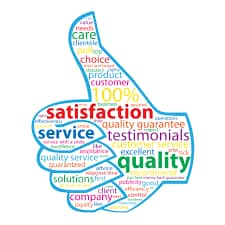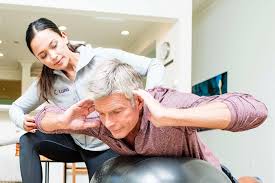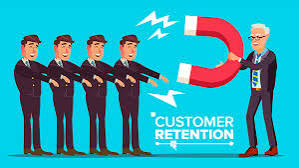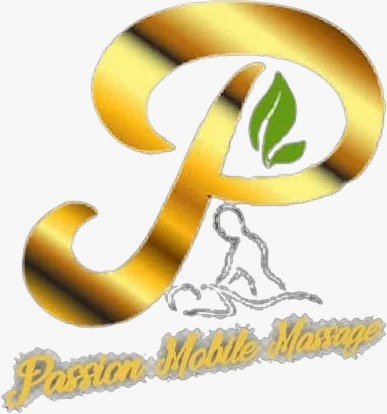The Importance of Communication in Massage Therapy
Effective communication is the cornerstone of a successful massage therapy session. It bridges the gap between the therapist and the client, ensuring that the client’s needs are met and the therapist can provide the best care possible. At Passion Mobile Massage, we prioritize open and clear communication to create a safe, comfortable, and beneficial experience for every client.
In this article, we will explore the vital role of communication in massage therapy, including its benefits, techniques for effective communication, and how it contributes to a positive therapeutic relationship.
Why Communication Matters in Massage Therapy

Communication in massage therapy goes beyond simple verbal exchanges. It encompasses:
- Understanding Client Needs: Every client is unique, with different preferences, health concerns, and expectations.
- Building Trust: Open dialogue fosters trust, allowing clients to feel more relaxed and at ease.
- Ensuring Safety: Discussing medical history and any contraindications helps prevent adverse reactions.
- Enhancing Effectiveness: Clear communication allows the therapist to tailor the massage to the client’s specific needs, ensuring better results.
Benefits of Effective Communication
1. Improved Client Satisfaction

When clients feel heard and understood, they are more likely to have a positive experience. Addressing their concerns and preferences ensures they leave the session feeling satisfied and cared for.
2. Better Therapeutic Outcomes

Understanding the client’s physical and emotional state helps the therapist target problem areas effectively, leading to improved therapeutic results.
3. Increased Client Retention

Clients are more likely to return and recommend your services when they feel their needs are consistently met through clear communication.
4. Enhanced Professionalism

Strong communication skills reflect the therapist’s professionalism and dedication to providing quality care.
Key Aspects of Communication in Massage Therapy
Effective communication in massage therapy involves several key aspects:
1. Initial Consultation

The initial consultation is the foundation of the therapist-client relationship. During this phase:
- Discuss Health History: Gather information about any medical conditions, allergies, or injuries.
- Understand Expectations: Ask about the client’s goals for the session, such as relaxation, pain relief, or improved flexibility.
- Explain the Process: Outline what the session will involve, including techniques, pressure levels, and duration.
2. Ongoing Dialogue During the Session
Communication shouldn’t stop once the massage begins. Key points include:
- Checking Comfort Levels: Periodically ask about the pressure, temperature, and overall comfort.
- Non-Verbal Cues: Pay attention to the client’s body language and reactions to adjust your technique.
- Encouraging Feedback: Create a safe space for clients to express their preferences or discomfort.
3. Post-Session Discussion
After the session, take time to:
- Ask for Feedback: Inquire about the client’s experience and any areas that may need more attention in future sessions.
- Provide Recommendations: Offer advice on self-care, stretches, or follow-up treatments.
- Discuss Progress: Highlight any improvements and set goals for future sessions.
Techniques for Effective Communication
1. Active Listening
Active listening involves fully concentrating on what the client is saying without interrupting. Techniques include:
- Making Eye Contact: Shows engagement and interest.
- Paraphrasing: Repeat what the client says to confirm understanding.
- Asking Open-Ended Questions: Encourage clients to elaborate on their needs and concerns.
2. Empathy
Empathy helps build a connection with the client by showing understanding and compassion. Simple phrases like, “I understand how that must feel” can go a long way in establishing rapport.
3. Clarity and Simplicity
Avoid using overly technical terms that clients may not understand. Use clear and simple language to explain techniques, benefits, or recommendations.
4. Non-Verbal Communication
Non-verbal cues can be just as important as words. These include:
- Body Language: Maintain a welcoming and open posture.
- Facial Expressions: Smile and show warmth.
- Touch: Use gentle and intentional movements to convey care and professionalism.
5. Adaptability
Each client is different, so adapt your communication style to suit their personality and preferences. For example, some clients may prefer detailed explanations, while others may value a quieter session.
Common Communication Challenges and How to Overcome Them
1. Language Barriers
- Solution: Use simple words, visual aids, or translation apps to bridge the gap.
2. Reluctance to Speak Up
- Solution: Reassure clients that their comfort and feedback are priorities. Encourage open dialogue in a non-judgmental way.
3. Misunderstandings
- Solution: Clarify instructions or preferences by paraphrasing and asking follow-up questions.
4. Cultural Differences
- Solution: Educate yourself on cultural norms and preferences to provide respectful and personalized care.
The Role of Technology in Enhancing Communication
Technology can improve communication in massage therapy through:
- Online Booking Systems: Allow clients to specify their preferences and needs during the booking process.
- Follow-Up Emails or Texts: Check in with clients post-session to gather feedback and schedule future appointments.
- Educational Content: Share articles, videos, or tips to help clients understand the benefits of massage and prepare for their sessions.
How Passion Mobile Massage Excels in Communication

At Passion Mobile Massage, we pride ourselves on fostering strong communication with our clients. Here’s how we achieve this:
- Personalized Consultations: We take the time to understand your unique needs and preferences before every session.
- Ongoing Feedback: Our therapists encourage open dialogue during the session to ensure your comfort.
- Post-Session Care: We provide tailored recommendations to help you maintain the benefits of your massage.
- Professional Training: Our team undergoes regular training in communication skills to deliver exceptional client care.
Tips for Clients to Communicate Effectively
Clients also play a role in ensuring a successful massage experience. Here are some tips:
- Be Honest: Share any health concerns, pain points, or preferences with your therapist.
- Provide Feedback: Don’t hesitate to speak up if something feels uncomfortable or if you’d like a different approach.
- Ask Questions: If you’re unsure about a technique or product, ask your therapist for clarification.
Conclusion
Communication is the foundation of a positive and effective massage therapy experience. By fostering open dialogue, understanding client needs, and providing clear feedback, both therapists and clients can ensure a session that is safe, comfortable, and beneficial. At Passion Mobile Massage, we are committed to creating an environment where communication thrives, enabling us to deliver exceptional care and support your wellness journey.
Book your next session with Passion Mobile Massage and experience the difference that effective communication can make!

